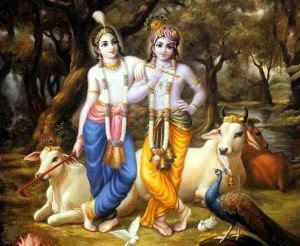
Sisupala is a relative of Sri Krishna and he is born with a lot of abnormal features. When Krishna touches him during his childhood, the child becomes normal. However a result of the broken curse, Krishna is destined to kill Sisupala. Krishna however promises Sisupala's mother that he would give his son a hundred chances before killing him.
When Yudhistra elects Krishna as the chief guest at the Rajasuya yaga, Sisupala becomes enraged and foulmouths Krishna. Krishna counts hundred absurdities hurled at him by Sisupala. The after his hundredth mistake, Krishna hurls his discuss, Sudharshana chakra towards him. Sisupala's head is severed. When Duryodhana calls for Krishna to be arrested, Krishna unviels his Vishwa-avatar
When Yudhistra elects Krishna as the chief guest at the Rajasuya yaga, Sisupala becomes enraged and foulmouths Krishna. Krishna counts hundred absurdities hurled at him by Sisupala. The after his hundredth mistake, Krishna hurls his discuss, Sudharshana chakra towards him. Sisupala's head is severed. When Duryodhana calls for Krishna to be arrested, Krishna unviels his Vishwa-avatar







































